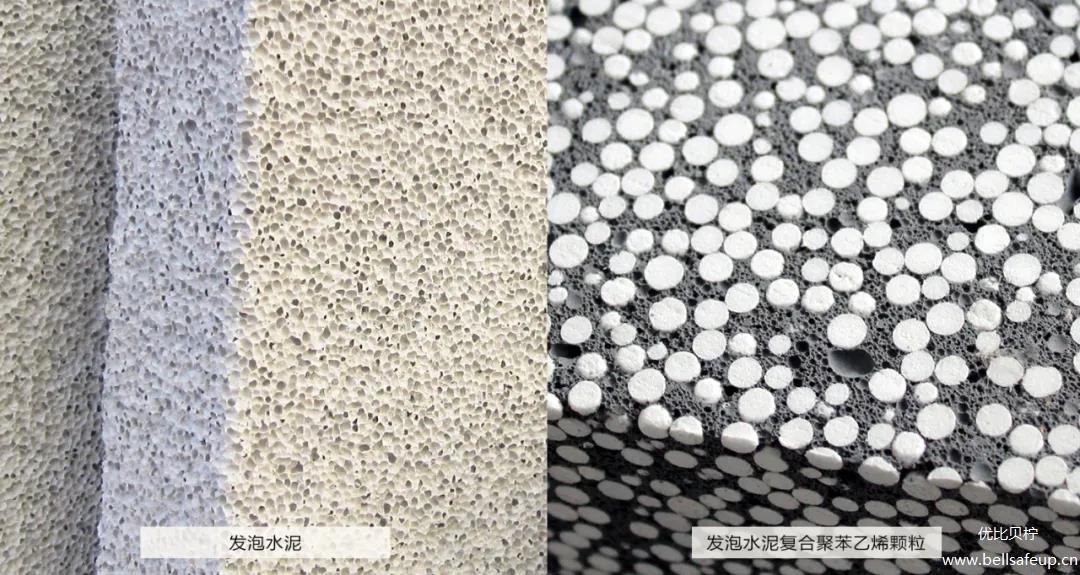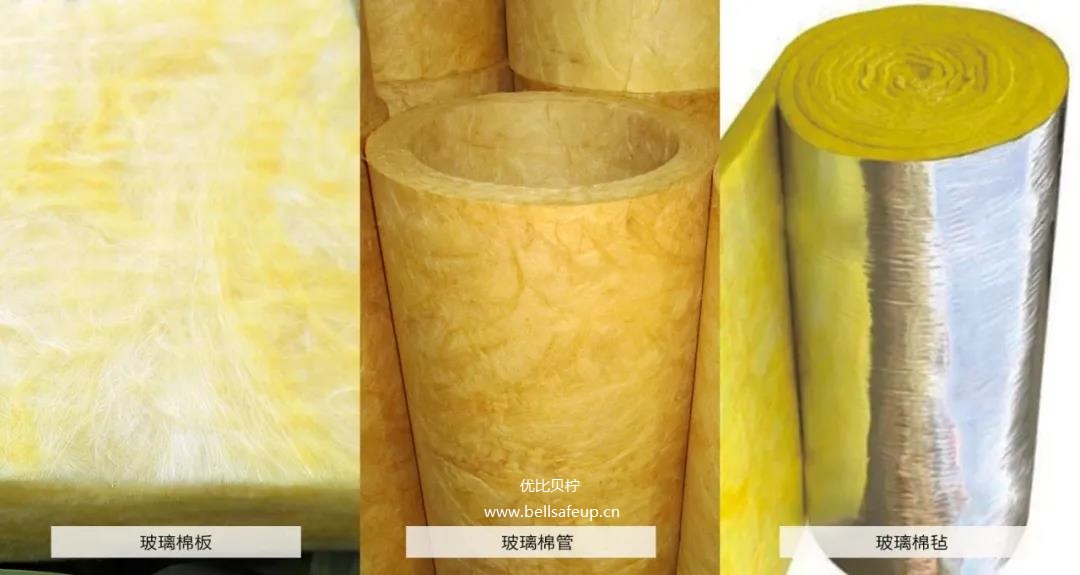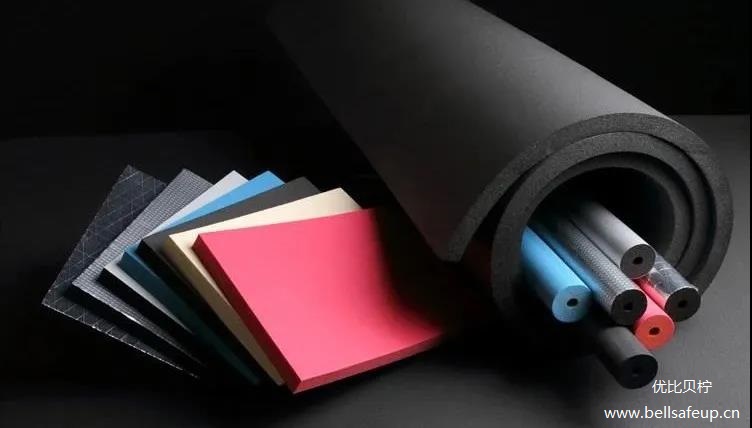Comparison of commonly used insulation materials
- Categories:Company News
- Author:
- Origin:
- Time of issue:2021-08-14 11:03
- Views:
(Summary description)Commonly used thermal insulation materials mainly include foamed cement, phenolic foam materials, aluminum silicate thermal insulation materials, loose thermal insulation materials (glass wool, rock wool thermal insulation felt), rubber and plastic thermal insulation materials.
Comparison of commonly used insulation materials
(Summary description)Commonly used thermal insulation materials mainly include foamed cement, phenolic foam materials, aluminum silicate thermal insulation materials, loose thermal insulation materials (glass wool, rock wool thermal insulation felt), rubber and plastic thermal insulation materials.
- Categories:Company News
- Author:
- Origin:
- Time of issue:2021-08-14 11:03
- Views:
1. Foamed cement
A new type of lightweight thermal insulation and fireproof material with a large number of closed pores formed by natural maintenance.

2. Good sound insulation effect: The sound insulation of foamed cement is 5-8 times that of ordinary cement;
3. More environmentally friendly: all additives of foamed cement are plant protein fiber and animal protein, which is non-toxic and harmless;
4. Moisture-proof and impermeable: Foamed cement is porous and integral, and has better moisture-proof and impermeable properties than ordinary cement;
5. Fireproofing: Foamed cement is an inorganic material, will not burn, and has good fireproof performance.
1. Low material strength (brittle);
2. The water absorption rate is high, which cannot be compared with wall insulation materials such as foam glass, foam ceramics, phenolic foam board, polystyrene particles, polystyrene board, and extruded board.
2. Phenolic foam material

2. Excellent thermal insulation performance: low thermal conductivity (<0.025W/m·K), excellent heat preservation and heat insulation performance;
3. Anti-corrosion;
4. Low density and light weight;
5. Good sound absorption performance;
6. Use safety: Phenolic insulation board adopts fluorine-free foaming technology, no fiber, and meets national and international environmental protection requirements.
2. The operating temperature is -60℃~150℃, and it cannot be used under high temperature. Exceeding 200℃ will release highly toxic fumes;
3. The physical properties are not ideal, the overall adhesion is not good, and the compressive and flexural resistance is extremely low. In order to increase its compressive and tensile strength, a layer of inorganic board or mesh cloth (sandwich board) is usually attached on both sides. );
4. The price is relatively high;
5. Organic matter is not resistant to aging, and the long-term effect of ultraviolet rays and other rays will cause the phenolic insulation board to lose its function and shorten the service life;
6. Pollution of the environment, phenol and formaldehyde are used in the production process, and the production of phenol and formaldehyde is a highly polluting project;
7. Different companies have different product improvement methods, and product quality varies greatly.
3. Aluminum silicate insulation material
Aluminum silicate thermal insulation material is a new type of environmentally friendly thermal insulation material. Single-component material, non-toxic and harmless, in line with national building standards, has excellent sound absorption, high temperature resistance, water resistance, frost resistance, low shrinkage, seamless overall, no cold bridge or thermal bridge formation, light bulk density, and heat preservation performance , Is a Class A non-combustible fireproof and heat insulation material, which is mostly used for industrial heat preservation and heat insulation, but less used for building heat preservation.

2. Low thermal conductivity and good thermal insulation performance. When used under the same conditions, aluminum silicate products have lower thermal conductivity than other thermal insulation materials;
3. Light weight, soft, light, and flexible, with dry process products ranging from 80 to 100 kg/m³, wet process products from 100 to 130 kg/m³;
4. It is not wet to molten metal and has good chemical stability;
5. Good sound absorption and sound insulation performance, with good sound insulation and sound insulation effect;
6. Good electrical insulation and high dielectric constant; it can be used as high-frequency insulating material.
2. Easy to produce dust;
3. The waterproof performance is not particularly good. If the aluminum silicate thermal insulation cotton comes into contact with water, it will greatly reduce the thermal insulation effect;
4. Loose insulation materials (glass wool, rock wool)


5. Rubber and plastic insulation materials

2. Low thermal conductivity: The rubber and plastic have low thermal conductivity, long-lasting stability, excellent cold and thermal insulation performance, and the outer surface of the material can prevent condensation and isolate the medium from heat exchange with the outside. It is a high-quality thermal insulation and energy-saving material. The thermal conductivity of Ubisoft's rubber and plastic products can be as low as 0.033w/(k·m) (at 0°C).
3. Good fire resistance: Rubber and plastic materials meet the national standard "Analysis of the Combustion Performance of Building Materials" flame retardant Class B1 fire protection requirements. In addition, there are "ultra-high oxygen index" rubber and plastic insulation materials suitable for high-rise buildings and high-density areas (such as Ubisoft Grade 0 rubber and plastic products).
4. Closed bubble structure: Adopting ACMF (Accurate Control Microcellular Foam) technology, the closed bubble rate of the cells is greatly improved, and the thermal conductivity of the product is lower; the cells are more uniform and dense, and the resistance to water vapor penetration is strong. Extended service life.
5. Moisture-proof and moisture-proof: The rubber and plastic have a closed bubble structure. It is difficult for water in the outside air to penetrate into the material. It has excellent resistance to water vapor penetration. There is no need to add a vapor barrier to the surface of the cold and thermal insulation layer. The moisture resistance factor of rubber and plastics is greater than 3500 (ISO9346) to form a built-in water vapor layer, even if the product is scratched, it will not affect the overall moisture resistance. Therefore, rubber and plastic are both an insulation layer and a moisture-proof layer. (The moisture resistance factor of UbiBining rubber and plastic insulation products can reach 15000).
5. Thin materials and space saving: Under the same insulation effect, the thickness of rubber and plastics used is about two-thirds less than other insulation materials. Therefore, the space above the ceiling of the floor can be saved, and the indoor height can be increased.
6. Long service life: Rubber and plastics have excellent weather resistance, anti-aging, cold resistance, heat resistance, anti-drying, anti-humidity, UV resistance, ozone resistance, non-deformation, and maintenance-free characteristics.
7. The appearance is high-grade, neat and beautiful: rubber and plastic have high elasticity, smooth surface, and soft texture. Even if they are installed on irregular components such as elbows, tees, valves, etc., they can remain intact and beautiful. The appearance does not need to be decorated, even if it is not suspended. It looks high-end and beautiful.
8. Easy and fast installation: Because the material is soft and no auxiliary layer is needed, the construction and installation are simple. For the installation of the pipeline, it can be fitted with the pipeline installation progress, or the rubber and plastic pipe can be split and then glued with special glue. combine.
Scan the QR code to read on your phone
-
Tel
-
E-mail
-
Message
-
top
Huizhou Bellsafe Up Technology Co., ltd.
Phone:020-85626465
Email:bellsafeup@163.com
Address: Fourth Industrial Zone, Shenli Village, Yuanzhou Town, Boluo County, Huizhou City
Copyright © 2021 Huizhou Bellsafe Up Technology Co., ltd. 粤ICP备15054146号 Power by www.300.cn






